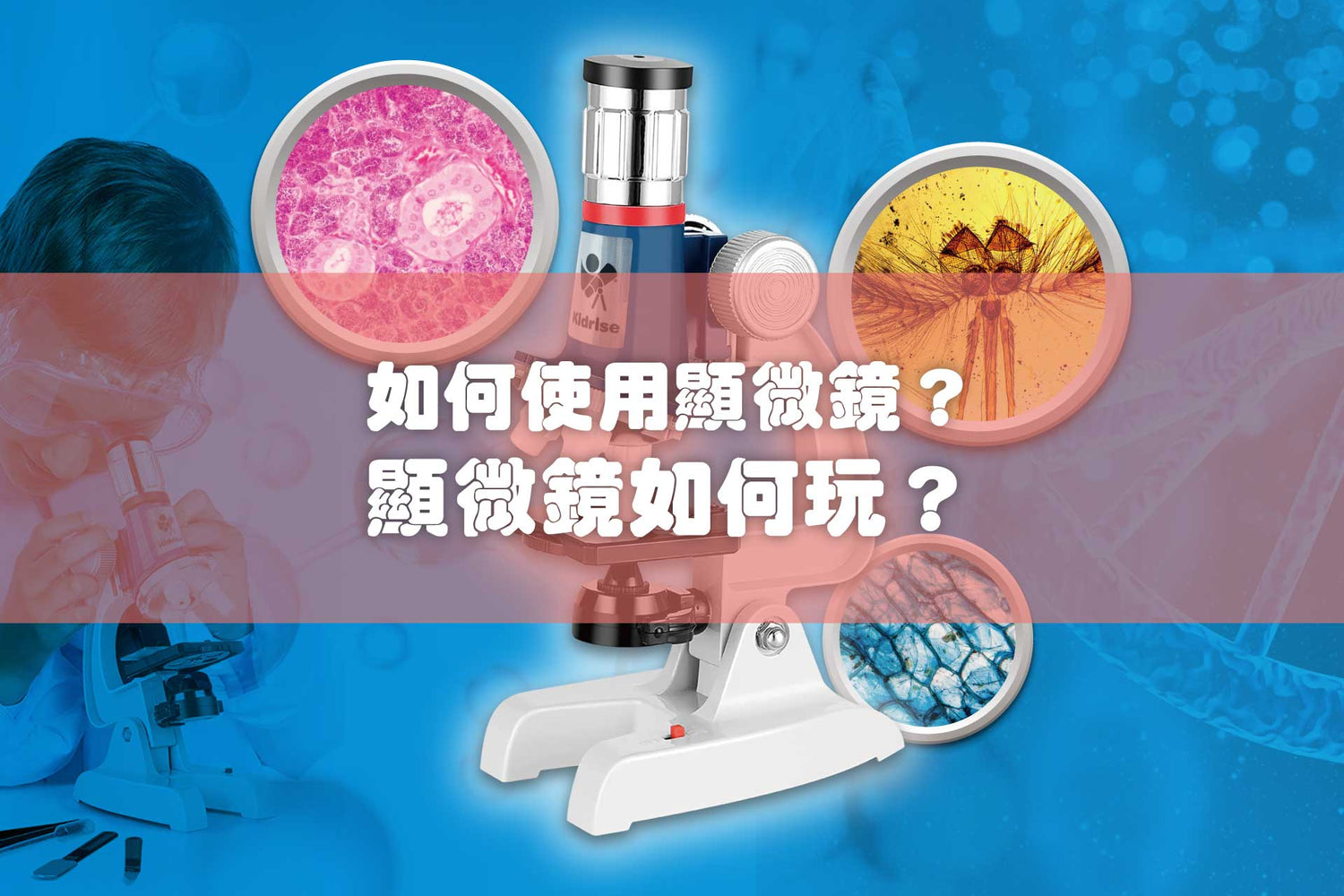How to use a microscope? How does the microscope work?
6 Simple Steps to Teaching Children to Play with Microscopes
A microscope is an instrument that magnifies tiny objects, allowing us to see details that are normally invisible. There are many types of microscopes, such as optical microscopes, electron microscopes, and scanning probe microscopes, all of which have different principles and functions.

In this article, we'll introduce one of the most common types of microscopes: the light microscope, and teach you how to use it properly to view samples.
6 easy steps to teach children to play with the microscope catalog
1. 6 simple steps to teach children to play with the microscope
An optical microscope uses the refraction of light to magnify the image of an object. It usually has a metal or plastic base, a bracket, a rotating objective lens group, an eyepiece, a mirror or lighting device, and a knob to adjust the focus.

An optical microscope uses the refraction of light to magnify the image of an object. It usually has a metal or plastic base, a bracket, a rotating objective lens group, an eyepiece, a mirror or lighting device, and a knob to adjust the focus. To use a light microscope, you need to prepare the following steps:
2.1 Select the sample to observe
Examples include a leaf, a drop of water, or a hair. If the sample is too thick or too large, you may need to slice it with a razor blade or cut it into small pieces to fit on the glass slide.

2.2 Prepare the specimen
Place the sample on a glass slide and fix it with a drop of water or other liquid. If desired, you can cover the sample with a coverslip to keep it from drying out or moving.
2.3 Fix the specimen on the microscope and turn on the lighting device
Place the glass slide on the stage of the microscope and secure it with clamps. Adjust the reflector or illuminator to allow light to pass through the glass slide and specimen.

2.4 Select the objective lens with the lowest magnification to observe first
Choose the lowest magnification objective (usually 4x) and turn it to align with the eyepiece. View the sample through the eyepieces and adjust the focus with the coarse focus knob (usually the larger knob) until a sharp image is seen.

2.5 Choose a higher magnification objective lens
If you want to further magnify the sample, you can choose a higher magnification objective lens (usually 10x, 40x and 100x), and repeat the fourth step. Be careful not to let the objective lens touch the glass slide or sample, so as not to cause damage. Also, as the magnification of the objective increases, you'll need to fine-tune the focus with the fine focus knob (usually the smaller one), and you may need to increase the brightness of the light.

2.6 Record what you see
When looking at samples, you can record the features you see such as shape, color, texture, etc., and try to compare the differences and similarities between different samples. You can also use a camera or mobile phone to take pictures of what you see for future reference or sharing.
3. Video teaching of microscope usage
There will be 46 seconds of the movie on how to use the microscope.
4. Kidrise New Microscope Promotion
Kidrise STEAM Science Experiment Children Exploring Microscope: Amazing Microscope (with specimens, slides, coverslips, Microscope Exploration User Manual)
Kidrise Tongle Gaofei's new Kidrise STEAM science experiment children's exploration microscope: Amazing Microscope (w...
5. Summary
The above are the science toys we recommend. They all have their own characteristics and advantages, which can allow children to increase their knowledge and skills while having fun, and cultivate their interest and curiosity in science. If you want to know more about these toys, you can click on the links provided above. Hope you enjoyed our presentation and have fun!

The toys selected above are specially considered for children at this stage. I hope you can also choose a type of toy that your child really likes, so that your child can play happily and learn completely.
I hope you like today's preschool enlightenment toys. If you know more about preschool enlightenment toys, or have other ideas about kindergarten toys, welcome to Kidrise Facebook to share with everyone!
further reading
What is the Montessori teaching method?
Self-learning tools under the epidemic - the latest STEM toys in 2023
【STEM Education】What is STEM? A new force in Hong Kong's education sector
about the author
Children can also use this to strengthen their competitiveness and development potential in the future society, and create a diverse and beautiful society together.
Let more children be inspired by playing, and bring more possibilities and outlets for the future. Children's future does not have to be determined only by academic success.





















